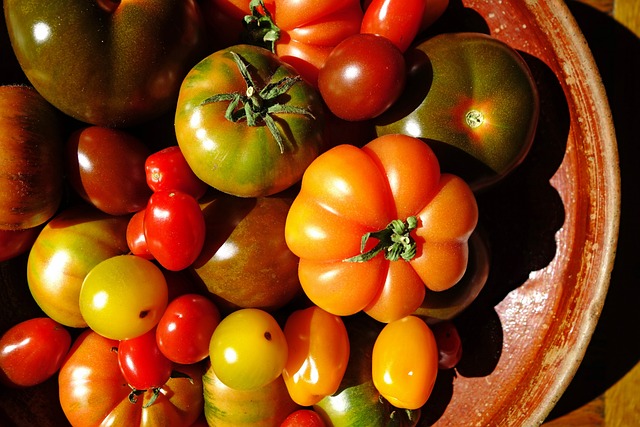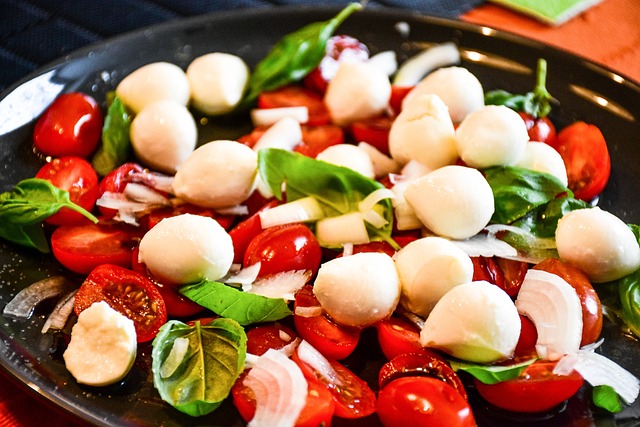TOMATO CHECKLIST ITEM 1 - SELECT THE BEST TOMATO VARIETIES FOR YOU.

It’s that time of year again to start your tomato crop.
Here’s a checklist of 20 items to raise a bumper crop of tomatoes, listed in order from starting your crop through harvest.
- Select the best varieties
- Germinate your seeds
- Pot on and harden off the seedlings
- Demarcate the best location in your garden
- Prepare the soil
- Plant seedlings deep to boost their roots
- Collar the seedlings with cardboard tubes
- Cover the soil with a layer of mulch
- Plant companion crops for optimal growth
- Support the growing plants to keep fruit off the ground
- Feed the growing plants
- Water deeply once or twice a week
- Prune to control rampant growth
- Protect your crop from insect pests
- Protect your crop from disease
- Prevent blossom end rot
- Harvest fruit as they begin to ripen
- Sever roots to speed up ripening
- Save heirloom seeds for next year’s crop
- Plan next season’s crop rotation
Over the coming three weeks I’ll go over all twenty items in detail. Let’s get started today with item 1 – selecting the best varieties.
One - Select the best varieties
Photo Credit – Pixabay, stephaniealbert-8562402
With thousands of tomato varieties, there’s too much choice.
The best way I’ve found to narrow down my options has been to look through seed catalogs. When writing their catalogs, seed sellers curate and field test hundreds of tomato varieties, then summarize their most important characteristics in a handy format, which makes it easy to find the tomato varieties that are best for you.
I recommend Johnny’s Selected Seed catalog – johnnyseed.com. Its section of tomatoes is a real treasure trove, yet is contained within a dozen pages, all well written and clearly illustrated, and divided into the most important categories. Also consider the seed catalogs published by Burpee, Pinetree Garden, Kitazawa, Baker Creek Heirloom and others
Order a copy of the catalogs you like and then select the best tomato varieties for your crop according to the following factors:
- your favorite tomato recipes – salads, sauces, snacks, soups, salsas, slicing, paste & green
- field crop (outdoors) or indoor crop (hothouse, hot frame, poly tunnel, greenhouse)?
- your growing zone and ripening schedule – from short, cool growing seasons to excessive heat
- determinate (bush) or indeterminate (vine) varieties – time and space available
- hybrid or heirloom – do you seek hybrid vigor, or prefer to collect seeds for next year’s crop?
- tomato disease resistance – tomato resistance codes – for technical gardening excellence
Consider the best tomato varieties for your favorite recipes
After all, the whole point of growing your own tomato crop is to enjoy the best flavor and optimum ripeness in your favorite recipes.
By all means choose more than one variety. I recommend that you grow a few small-fruited grape or cherry varieties for the best caprese salad and greek salad you’ve ever tasted. Select from large-fruited varieties for sandwich slices. For your favorite omelet, soup, pasta sauce and pizza sauce recipes, select from the special category of paste tomatoes. Also consider growing tomatillos for salsa, artisan varieties for snacking, and heirloom varieties for their rich, distinctive flavors…

Photo Credit – Pixabay, ritae-19628
Choose between Greenhouse or Field Crop Varieties
Probably all tomato varieties will thrive in a greenhouse or polytunnel. But a few varieties have been specifically bred to make the most of these protective structures.
If you do have a greenhouse or polytunnel, I’m sure you’ll be pleased to see the special options available to you. Many of them are the large-fruited, hot house or beef steak varieties.
Growing tomatoes in greenhouses definitely makes sense for climate zones 1 through 4, where field crops are limited to those varieties that need only 55 days to reach harvest. In fact, greenhouses have enabled gardeners to grow impressive tomato crops in places as far flung and far north as Minnesota, Alberta, Alaska and even Siberia. Take heart in knowing that in these locations the summer days can last more than 18 hours.
For zones 7 and up, I’m not sure if greenhouses are even relevant for tomato crops.
For growing Zones 1 through 4 - choose varieties that ripen in time
In these zones, your choice of tomato variety is limited by the tomato plant’s complete intolerance of frost and its need for warm soil and air with lots of sunlight hours per day. Gardeners growing field crops in climate zones 1 through 4 need to select fast growing varieties whose time to harvest – after transplanting the seedlings – is the bare minimum – 55 days.
Consider the picturesque names of these early, cool climate varieties: Alaska, Alaska Fancy, Andes, Anna Russian, Aurora, Beaverlodge Slicer, Beliy Naliv, Bison, Earliana, Early Annie, Early Wonder, Glacier, Glasnost, Gold Dust, Gregori’s Altai, Manitoba, Moskovitch, Northern Lights, Purple Russian, San Francisco Fog, Sebastopol and Speckled Siberian – all available from Tomatofest.com. See the tomatofest site for many more cool climate varieties.
Otherwise, growing your crop in a greenhouse can extend your growing season to suit any variety.
Gardeners in zones 5 through 9 can select any tomato variety without worrying about the number of days to harvest – i.e. varieties that span the full range of possibility from 55 to 85 days. You may even be able to grow multiple crops.
Bear in mind that tomato crops won’t tolerate excess heat or super intense sunlight. Gardeners in zone 10 or 11 may need to limit their crops to the cooler months and provide them with shade to prevent sunscald and to avoid pollination issues. I’m guessing that certain varieties are more suitable for zones 10 and 11 because they are more tolerant to excess heat and sun, and are more easily pollinated. Check out this article at BonniePlants.com that describes how to grow tomatoes in hot climates, referring to varieties such as Heatmaster, Solar Fire, Summer Set, and Phoenix.
Select from determinate, bush types or indeterminate, vine types
Determinate or bush type varieties offer the advantages of needing the fewest days from transplanting to harvest, and requiring the least amount of labor for pruning and training along supporting structures (tomato cages, ladders, stakes and trellises). On the other hand, they generally yield their fruit all at once, which requires preparation, or staggered plantings.
By contrast, the indeterminate or vine types will continue to grow and produce until frost ultimately kills them.
Finally select for disease resistance
The last thing to consider in your decision is disease resistance. I suspect that disease resistance is much more important for commercial production of a single variety, where the consequences of tomato disease can be dire.
But for small crop growers, backyard gardeners and self-sufficient growers, it’s good to know that some varieties that have been bred to resist specific tomato diseases.
I recommend you choose varieties that are resistant to late blight, if you have the option. Otherwise, stick with all of the previous characteristics that you’ve already decided upon.
Happy tomato crop decision making!
Tomorrow, we’ll look at germinating the seeds you’ve selected.
Cheers!
